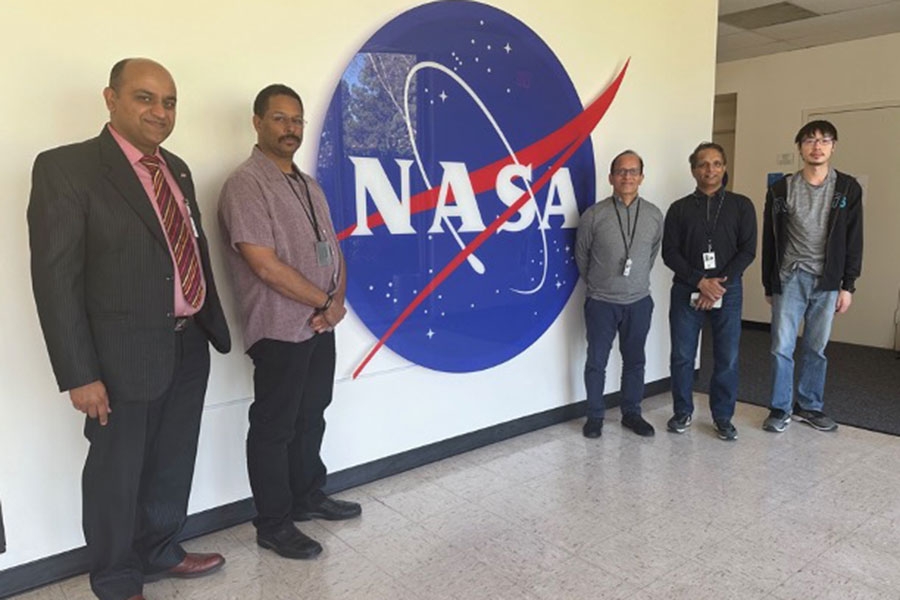
NORMAN, OKLA. – A team from the University of Oklahoma Gallogly College of Engineering has embarked on a pioneering partnership with scientists from the National Aeronautics and Space Administration, NASA, to advance research and technological development in advanced air mobility. This initiative aims to support NASA's efforts in integrating a range of new scalable traffic management operations, focusing on enhancing energy efficiency and real-time capabilities in collision avoidance, navigation, and control systems for advanced air mobility in complex environments.
Funded by a NASA EPSCoR grant, the research team comprises Mike Banad, Rockee Zhang, and Golnaz Habibi from OU and He Bai from Oklahoma State University. This project will use neuromorphic, or advanced brain-like technology, to improve the ways in which uncrewed aircraft systems (UAS) manage air traffic – focusing on improving their ability to sense and avoid obstacles, as well as their communication and navigation skills. This research aims to improve the safety of adding UAS for urban transportation into current air traffic systems.
Through communication with NASA and a visit to the Ames Research center, the team has aligned the project with the NASA NExCT program goals to establish functional requirements for air traffic management operations and to foster cooperative operating practices among diverse aircraft types. The collaboration underscores a shared commitment to developing innovative, AI-enabled, scalable and secure autonomous navigational solutions, improving the efficiency and safety of unmanned aerial vehicle operations and contribute to the program’s broader goal of advancing air mobility and traffic management technologies for future aerospace endeavors.
About the University of Oklahoma
Founded in 1890, the University of Oklahoma is a public research university located in Norman, Oklahoma. As the state’s flagship university, OU serves the educational, cultural, economic and health care needs of the state, region and nation. OU was named the state’s highest-ranking university in U.S. News & World Report’s most recent Best Colleges list. For more information about the university, visit ou.edu.
Three University of Oklahoma graduate students have been named winners of the 2025 Three Minute Thesis competition, which challenges participants to explain their research in three minutes to a non-specialist audience.
Sarah Sharif, a researcher with the University of Oklahoma, has been awarded funding from the U.S. Department of Defense (DoD) to create innovative light detectors that pick up mid-wave and long-wave infrared signals at higher temperatures than previously considered achievable.
A team from OU and WVU recently earned a five-year, $3.5 million grant from the National Institutes of Health to study how concept cigarillos influence the potential for addiction. The results will be used to inform the FDA’s impending flavor ban on cigar products and could have wider-reaching implications for other tobacco products that come in flavors, such as e-cigarettes and tobacco-free nicotine pouches.